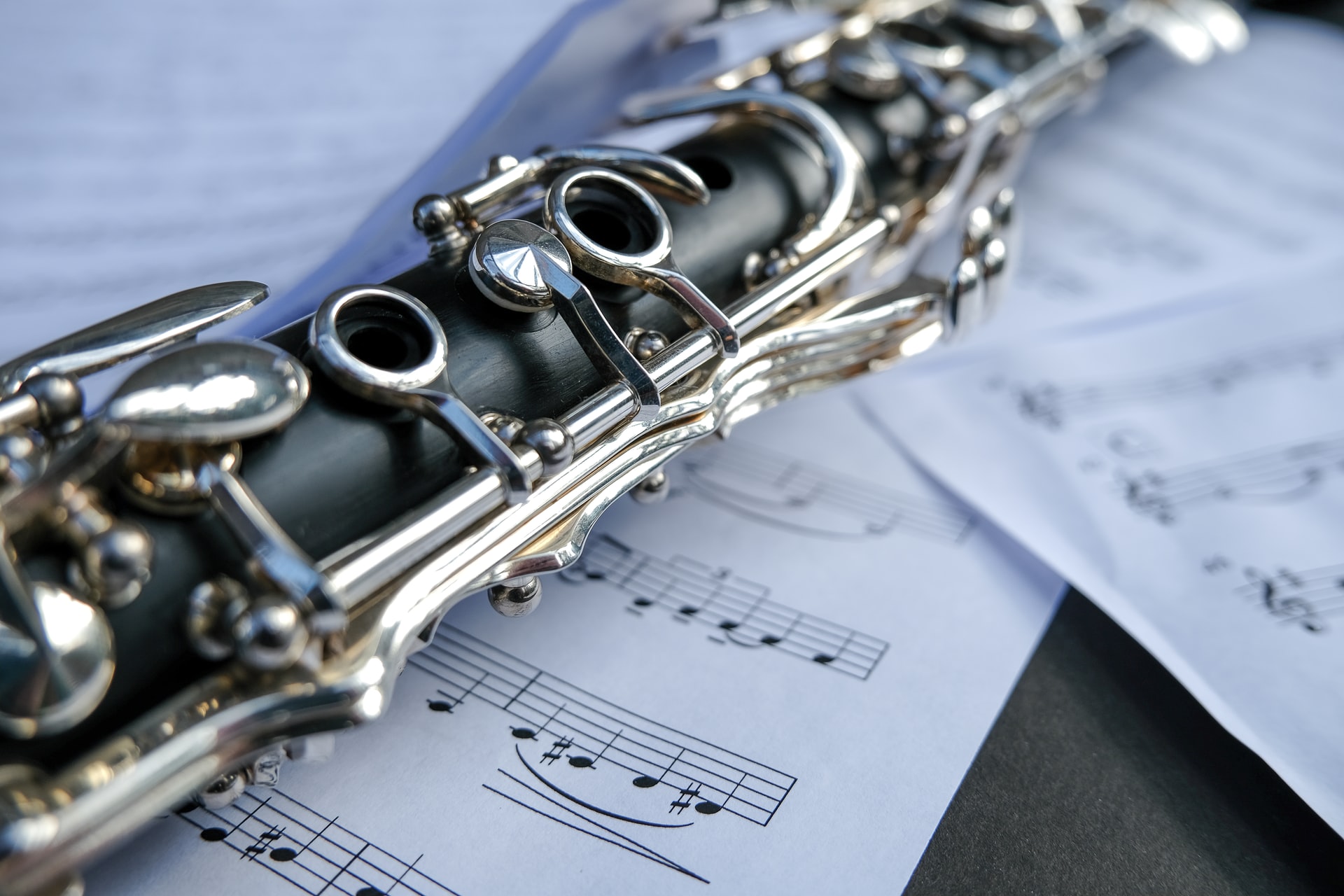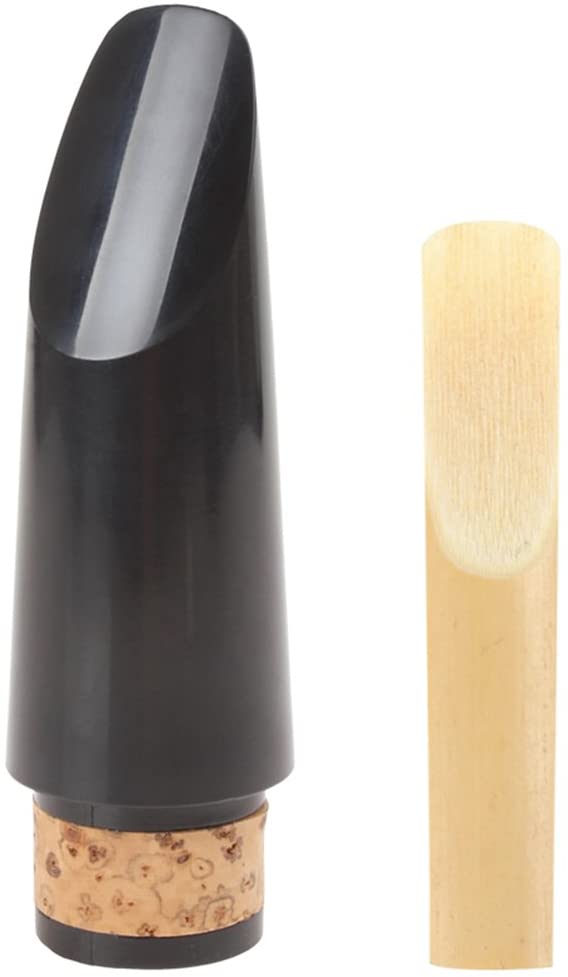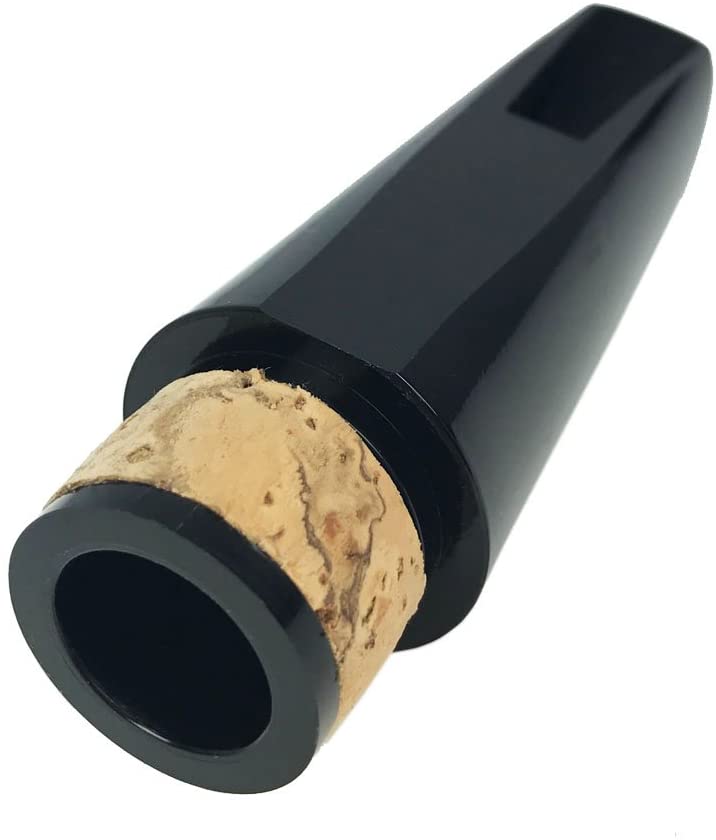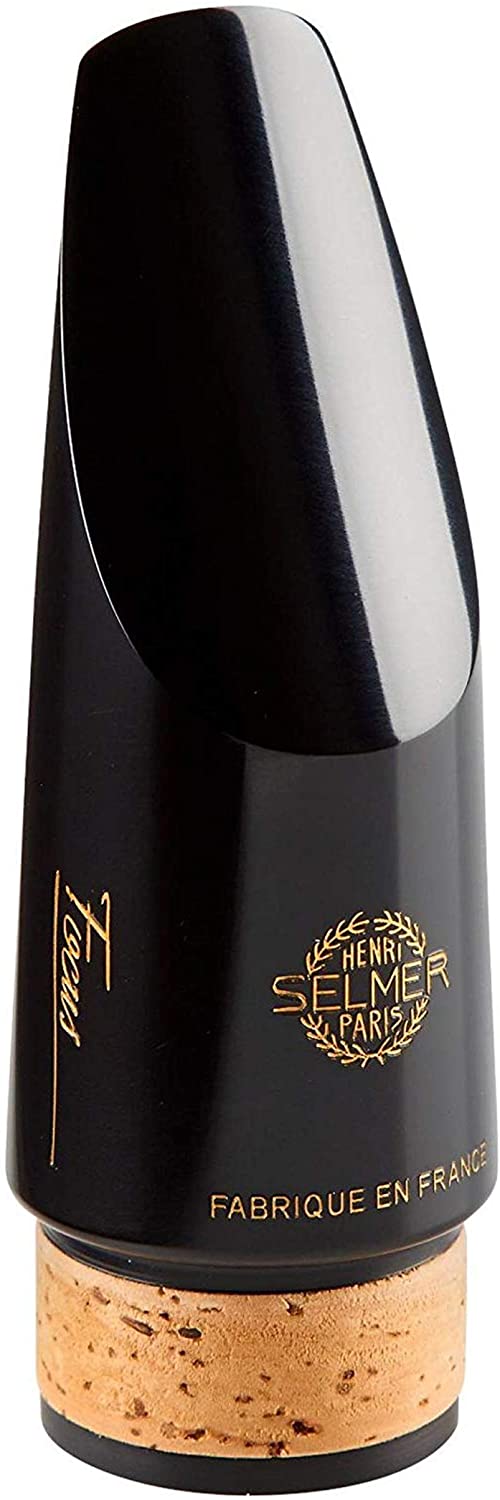- How to Find the Best Clarinet Mouthpiece - August 22, 2021
- Best Clarinet Sheet Music to Learn With - August 20, 2021
- Best Saxophone Sheet Music to Learn With - August 20, 2021
One of the most important steps to becoming a successful clarinet student or performer is selecting the correct mouthpiece to help you enhance your performance. It is possibly the most important piece of equipment that one can have on the clarinet. Aside from the reed, the mouthpiece is the part of the clarinet that will help channel the sound and tone quality that you desire.
The selection process will be different for every player for several reasons. There are, however, a few general factors that every player should consider. I will therefore compare and guide you through the best mouthpieces from reputable brands with such factors in mind. These factors include the material that the mouthpiece is made from, the tip opening, the facing length, and the musician’s level (beginner/intermediate/advanced).
Before we compare the various mouthpieces, we need to understand the function of the mouthpiece before analyzing the criteria for this piece of equipment.

Why purchase a new mouthpiece?
Buying a new mouthpiece is one of the easiest and most affordable ways to upgrade your clarinet without having to purchase a new one. Whether you are a beginner, intermediate, or advanced player, a new mouthpiece will do wonders for your quality of sound and performance. However, that doesn’t mean that the mouthpiece will be cheap. Most mouthpieces on the market are expensive but choosing the correct one will greatly impact your performance. There are many options of mouthpieces available. So how does one go about choosing the correct one?
Choosing a mouthpiece differs from person to person depending on:
- The type of sound that the musician wants: A brighter or a darker tone and whether the musician wishes to project their sound.
- The level of the musician: Being either a beginner, intermediate or professional player.
In association with the two points above, every clarinet player should consider the tips mentioned in this article when purchasing a clarinet mouthpiece.
Decision making tips
Mouthpiece Tip Openings
The mouthpiece opening, also known as the tip opening, is the distance between the reed and the mouthpiece. Some musicians describe this as the curve, which can be found at the very top of the mouthpiece.
Why is this useful to know?
The wider the tip opening (wider curve), the more difficult it becomes to produce a sound. For this reason, it is advised to match a wider tip opening with a softer reed. On the other hand, a smaller tip opening (smaller curve) or a medium tip opening is advised for beginner players as this allows for easier sound production. It is advised that one matches the smaller tip opening with a harder reed to allow for good quality tone production.
What will happen if I ignore this advice?
If you decide to purchase a clarinet mouthpiece with a wide tip-opening and match it with a hard reed, one of two things will occur:
- You will not be able to produce a sound at all as it would be very difficult to exert enough air into the mouthpiece to get the reed to vibrate (the vibration creates the sound).
- You will be able to produce a sound but with great difficulty, which will negatively affect your sound quality and overall performance.
The opposite occurs when pairing a smaller tip opening clarinet mouthpiece with a softer reed, one of two things will happen:
- You will not be able to produce a sound as the reed will get stuck to the mouthpiece, which will stop the reed from vibrating.
- You will be able to produce a sound, but the tone will be unfocused and quite poor overall.

Mouthpiece Facing Length
Aside from the mouthpiece tip opening, one must also consider the mouthpiece facing length. The mouthpiece facing length can be grouped into three categories:
Shorter Facing Length
This is when the reed separates from the table of the mouthpiece and moves closer to the tip of it. I would recommend this feature for classical and modern contemporary music as it provides a more stable and controlled tone.
Medium Facing Length
This is when the reed separates from the table of the mouthpiece and moves slightly further back than it would in short facing length. I would recommend this feature for classical and modern contemporary music for the same reasons as for shorter facing length above. Additionally, this feature also allows for more sound projection.
Long Facing Length
When the reed separates from the table of the mouthpiece, it moves even further back, compared to the medium-facing length explanation. I would recommend this feature for more contemporary, and jazz music as the tone produced is more “breathy” and allows for lots of flexibility in sound quality and projection.
Materials: Plastic, Hard Rubber, Wood, Crystal
I will be talking about four different material types that clarinet mouthpieces are made from.
Plastic Mouthpieces
A plastic mouthpiece is a standard and affordable mouthpiece that usually comes with purchasing a student or intermediate-level clarinet model. Plastic mouthpieces are both affordable and durable. I highly recommend plastic mouthpieces to beginner students who are still finding their sound and/or love for the instrument. The plastic mouthpiece offers a round and bright tone allowing enough projection for the beginner player. However, the plastic mouthpiece can at times present an overly bright tone and can be difficult to focus.
Hard Rubber Mouthpieces
The hard rubber material offers the player a rounder, more focused tone with just the right amount of projection. The hard rubber mouthpieces are often used when playing classical and jazz music. Unfortunately, rubber mouthpieces tend to be more expensive than plastic mouthpieces. However, this is expected when upgrading equipment.
Crystal Mouthpieces
Softer materials generally allow for less projection, but they emit a beautiful dark tone. The opposite is found in harder materials, of which crystal is one. The harder the material, the brighter the sound. Crystal mouthpieces offer good projection, which is great for jazz musicians and outdoor playing. However, the crystal mouthpiece needs to be properly cared for as it is fragile. I would recommend purchasing a mouthpiece pouch with the mouthpiece to safeguard it from potential chipping and damage.
Wooden Mouthpieces
Wooden mouthpieces are rarely used as the tone quality is rather unstable, with the worst projection ability in comparison to plastic and rubber mouthpieces.

Pros and Cons Summary of Mouthpiece Materials
| Mouthpiece material | Pros | Cons |
| Plastic |
|
|
| Hard Rubber |
|
|
| Crystal |
|
|
| Wood |
|
|
Level of the Musician: Beginner, Intermediate, Advanced
There are many reputable clarinet mouthpiece brands available on the market, with my own preferred brands being Yamaha, Buffet, Vandoren, and Selmer. However, the brand should not be the only criteria used when considering the purchase of a new mouthpiece. I will therefore choose and compare different branded mouthpieces according to the level of the musician and the various qualities that a mouthpiece has to offer. Ultimately, you want a mouthpiece that is easy to use and gives you the sound you are looking for.
Recommendation for Beginner to Intermediate Players
Sonata Clarinet Mouthpiece
I am generally not a fan of the Sonata instrument brand as I find their quality to be poor. The mouthpieces’ materials are cheap, and the overall sound quality is quite bad. However, purchasing a beginner clarinet mouthpiece from Sonata is a decent and practical choice.
The mouthpiece is made of durable plastic, making it easy to blow and affordable. This mouthpiece is ideal for young beginner students who are not sure whether they like the instrument, and it will not make a massive dent in your wallet.

Yamaha Clarinet Mouthpiece MPCL 4C: Model: YAC1266
This is a great mouthpiece for beginners and intermediate players. This mouthpiece is made of high-quality phenol resin (plastic), and it is easy to play on for most players. The design is based on the top-grade C series of Yamaha mouthpieces. However, the facing length is slightly shorter than the top-grade C series, which makes it easier for students to play and achieve a rich clarinet sound. This mouthpiece will provide a decent quality tone for intermediate players and is an excellent choice for beginners.
Another intermediate mouthpiece option would be the Yamaha MPCL 5C or MPCL 6C, which has all the same top-quality features as the MPCL 4C but with a wider opening. I would, however, not recommend the MPCL 6C mouthpiece for beginner players, as I find them more appropriate for intermediate players due to their wider tip openings which can make it challenging to produce a sound.

Recommendation for Intermediate to Advanced Players
Vandoren and Selmer are the top two mouthpiece brands that I would recommend for more advanced players.
Vandoren
Vandoren offers a great selection being the 5RV, B40, B45, and M30 series of mouthpieces. These four mouthpieces are similar in design with few modification differences allowing quality sound production to the professional musician. These mouthpieces are micro-engineered and are made from a hard rubber material called ebonite.

Selmer Focus and Concept
Selmer produces two models of mouthpieces that I believe are rather under-rated. These two mouthpieces are, in my opinion, some of the best factory-made hard rubber mouthpieces.
The Selmer Concept and Focus mouthpieces are similar in design with different tip openings and facing lengths. Both mouthpieces work well with wooden and synthetic reeds and are able to produce and maintain a bright sound. If you are a player who likes control and enjoys playing on a harder reed (size 3.5-4.0), then the Selmer Focus is a good match for you. However, if you are a musician who favors softer reeds (3.5 or lower), and you prefer a bit more flexibility in your sound, then I would recommend the Concept.
Many professionals prefer the Concept over the Focus as it gives them more freedom and sound flexibility, but this is at the cost of precision and control. I prefer playing on harder reeds and having more control over my sound. I would therefore recommend the Focus over the Concept if you are considering these two Selmer options.

Additional Advice
I would also recommend playing either the Selmer or the Vandoren mouthpieces on the Vandoren traditional or V12 reeds. Kane reeds often lack consistency compared to synthetic reeds, but I have personally had good experiences with the Vandoren reeds as I am able to produce a controlled and rich tone with these reeds.
Other Tips
Before purchasing a mouthpiece, one should consider all the points listed above. However, there are two other very important factors that you need to keep in mind:
- Compatibility of the mouthpiece with your clarinet: some mouthpieces may not be compatible with your current clarinet brand and model
- Your personal experience with different mouthpieces: every person has a different mouth shape and positioning of teeth, which can affect the way you produce a sound on the clarinet. This means that you may have completely different experiences with a particular mouthpiece compared to others.
Conclusion
I would recommend the Yamaha MPCL 4C for beginner players as it is a good quality yet affordable mouthpiece with a good size tip opening suitable for beginner players. I would also recommend the Yamaha MPCL 5C, which has a wider tip opening but is also good for a beginner player. Both of these mouthpieces are made of high-quality plastic, which means that they are durable and can emit quality sound.
I would recommend the Selmer Focus for intermediate to advanced players, as this is my personal favorite. This mouthpiece is not cheap, but it is well worth the investment for a high-quality hard rubber mouthpiece that provides a beautiful dark tone and offers the musician sound precision and control.
Final advice to the buyer
No matter what mouthpiece you decide to purchase, it is always important to do some research beforehand. Use the tips mentioned above to guide you through your research. However, it is very important to test the mouthpiece for a few days before purchasing it. Most music stores allow you to test and take the mouthpiece home before you purchase it. Therefore, I would highly recommend that you go to a music store and try out various mouthpieces for a few days before making a purchase.
Frequently asked questions (FAQ’s)
Answers: Yes, the clarinet mouthpiece can be easily cleaned in warm water with a detergent. One should clean the clarinet mouthpiece at least once a week using a small brush that can be purchased from most music stores. It is important that you do not wash the entire clarinet in water as this will damage the instrument. Be careful when washing the edges of the face of the mouthpieces, as you may chip away at the material, which will then cause changes to the sound. Be sure to rinse with clean water and dry carefully.
Answers: A mouthpiece tends to last between three to four years. This all depends on the amount of time one spends playing the clarinet and using the mouthpiece. It would be a good idea to consider mouthpiece crafting. There are mouthpiece craftsmen that specialize in restoring mouthpieces. However, this would be a more feasible option for intermediate to advanced mouthpiece buyers who use expensive mouthpieces.
Answers: Clarinet mouthpieces can determine the shape and tone quality of the sound produced. A different or better mouthpiece will add either a bright or dark tone and either flexibility or control to your performance. Having an appropriate clarinet mouthpiece is the equivalent of having a correct mouthpiece for a brass instrument or a better bow for a string instrument.



